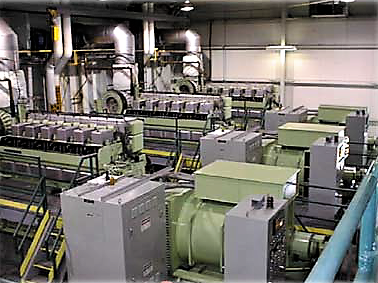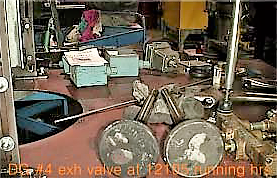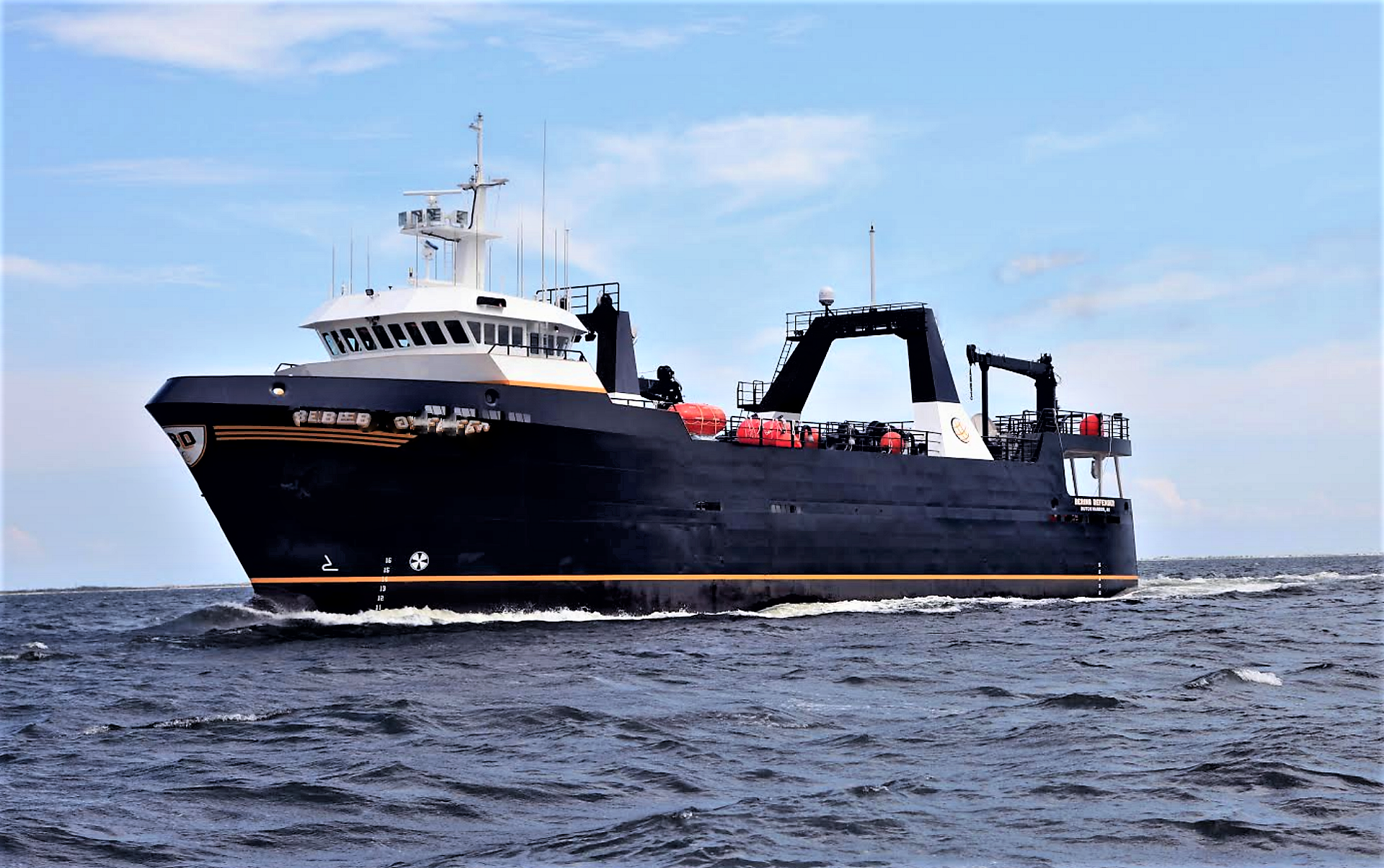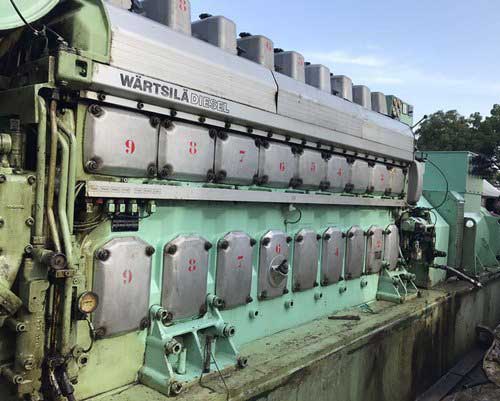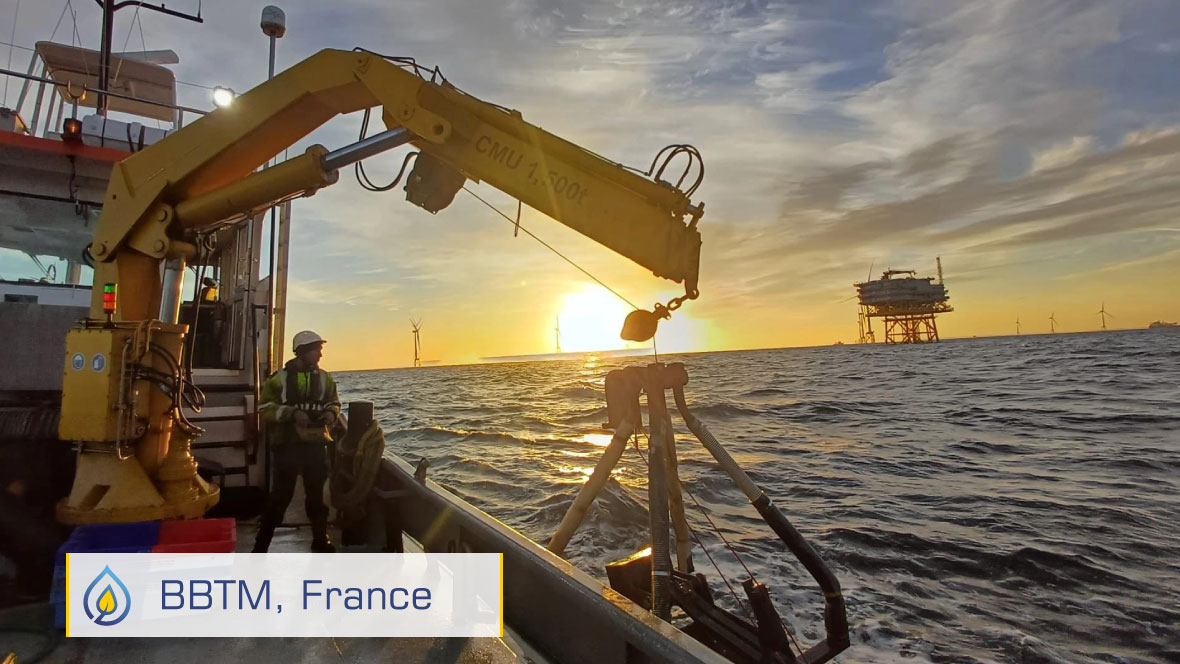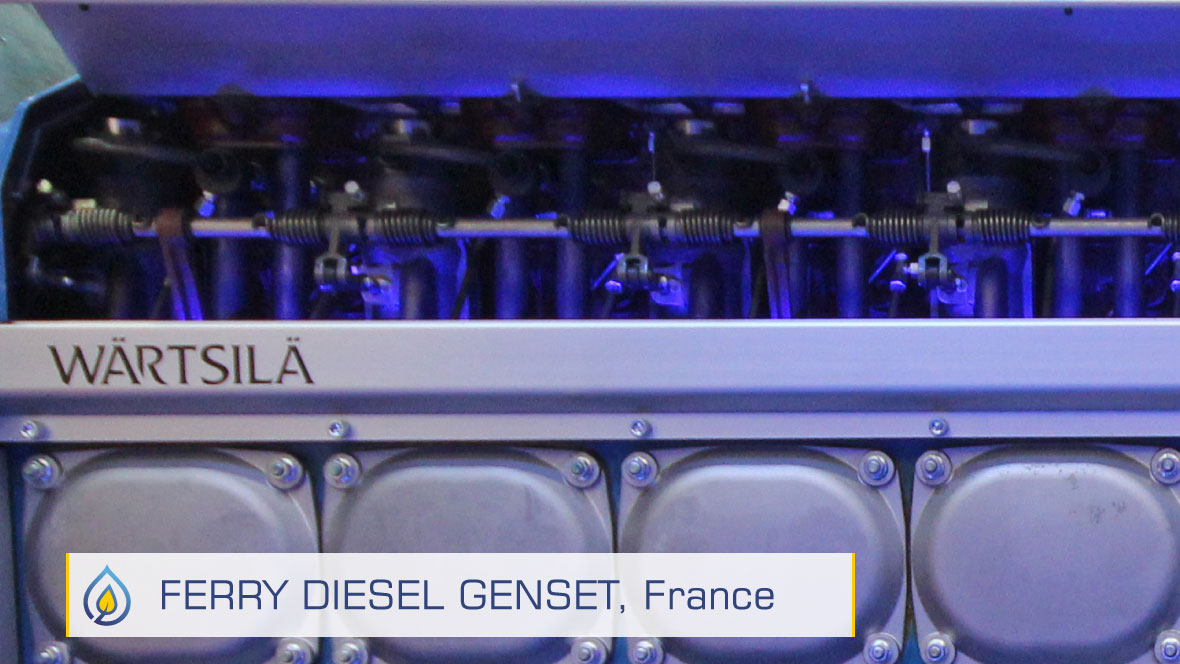PROBLEMS WITH FUEL
Westward’s primary diesel fuel tank is exposed to weather, but their genera- tor day tanks are indoors, and kept next to the fish oil tank. The fish oil is kept hot to prevent gelling, and the radiant heat keeps the diesel tank warm. The change in temperature and humidity creates condensation in the tanks, and bacteria thrived. Their plant engineers have specified the use of biocides to control growth, and they have used BioBor brand for many years. Biocides are injected by pulse pump directly into the day tank.
Maintenance of the filter system for the fish oil was severe, forcing cleanups of their basket strainers up to 13 times per day. Sludge buildup and excessive soot buildup limited the amount of the fish oil they could burn, creating large stockpiles of the waste oil.
Additionally, the fuel oil blend for the generators was limiting output due to high engine temperatures and lower BTU availability. Emissions were considered acceptable; with only a light haze out- side the plant exhaust stacks. Carbon deposits in the combustion chamber were typically 1 mm to 2 mm, and although considered acceptable, required as long a week to wire brush clean during routine engine maintenance.
DIESEL FUEL TANK CLEANER – APPLICATION TIME LINE
June 2000
Mr. Lloyd Williams, Westward’s chief engineer initially tested XBEE in a laboratory, (CT&E Environmental Services) and noted minor changes in sulphur and moisture, but with no apparent ill effects on viscosity or inorganic contaminants. Tests were made in diesel, crankcase oil, and fish oil.
August 2000
Mr. Williams added the Enzyme Fuel Technology via their old biocide pumping system in a double-dose to their 10,500-litre daily tank. The plant burns approximately 26,000 litres per day.
- At 24 hours, the light haze from the exhaust stack had disappeared.
- At 72 hours, NOx had dropped from 1,175 ppm to 1,150 ppm and stack temperatures had dropped by 10 degrees Centigrade.
December 2000
After four months using XBEE diesel fuel tank cleaner, during a routine, 12,000-hour maintenance service, the combustion chamber and exhaust valves were examined and were found to have only a light
dust-like coating of soot rather than the typical 1mm to 2 mm buildup of hardened carbon deposits. Clean up was done by wiping with a rag, and was done in one night, saving the mechanics five working days.


